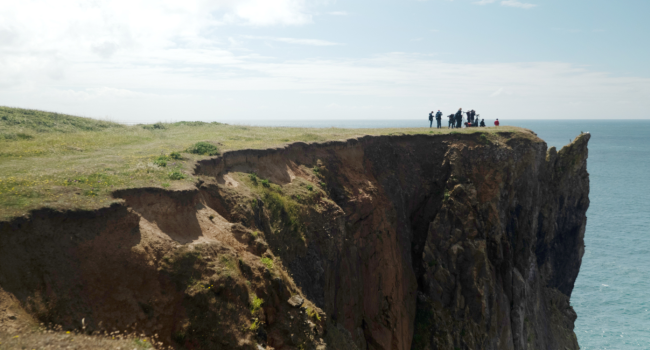Active European warzone impacts raptor migration

Author(s): Russell, C., Franco, A., Atkinson, P., Väli, Ü. & Ashton-Butt, A.
Published: May 2024
Journal: Current Biology Volume: 35
Digital Identifier No. (DOI): 10.1016/j.cub.2024.04.047
In 2019, BTO began research in Polesia, including parts of northern Ukraine. This work has been severely impeded since the Russian invasion of February 2022. However, prior to the outbreak of war, BTO staff had been involved with fitting GPS tags to Greater Spotted Eagles breeding in southern Belarus. These tags were still transmitting in March and April 2022, when the birds wearing them migrated across Ukraine to return to their breeding grounds. At this time, much of Ukraine was an active war zone.
The tagging work had provided data on 65 migrations before the conflict began, so this study’s authors were able to compare these data with those collected during the migration of spring 2022. Before the war, birds took 1–2 weeks to cross Ukraine, and 90% of individuals spent time at stopover locations.
In March and April 2022, the eagles’ migrations covered a distance that was 10% longer than normal, as birds responded to disturbance caused by the fighting. The migrations were also slower. Males flew 30% more slowly, and took 50% longer to cross Ukraine than previously. The equivalent figures for female birds were 20% and 25% respectively. Less than a third of the tagged birds used stopover sites in Ukraine. The birds’ migrations outside Ukraine in spring 2022 were no different to those in previous years.
The research sheds light on the consequences of war for wildlife. Migratory birds are exposed to a range of other threats, including habitat loss and bad weather, but this work adds to the body of knowledge about the challenges these species, many of which are in decline, must overcome as a result of human activity.
Abstract
Human conflicts can have impacts on wildlife, from direct mortality and environmental damage to the displacement of people, changing institutional dynamics and altering economies. Extreme anthropogenic disturbances related to conflict may act as a barrier to migrating birds and increase the energetic costs of migration. On February 24th, 2022, the Russian Federation invaded Ukraine, with targeted attacks on Kyiv and the eastern regions. By March 3rd, when the first of 19 tagged Greater Spotted Eagles entered Ukraine on migration, the conflict had spread to most major cities, including parts of western Ukraine. We quantified how conflict impacted the migratory behavior of this species using GPS tracks and conflict data from the Armed Conflict Location and Event Data (ACLED) project in a quasi-experimental before-after control-impact design, accounting for meteorological conditions. Migrating eagles were exposed to conflict events along their migration through Ukraine and exhibited different behavior compared with previous years, using fewer stopover sites and making large route deviations. This delayed their arrival to the breeding grounds and likely increased the energetic cost of migration, with sublethal fitness effects. Our findings provide a rare window into how human conflicts affect animal behavior and highlight the potential impacts of exposure to conflict events or other extreme anthropogenic disturbances on wildlife.
Notes
This project was supported by the Endangered Landscapes Programme, managed by the Cambridge Conservation Initiative in partnership with Arcadia.








Share this page